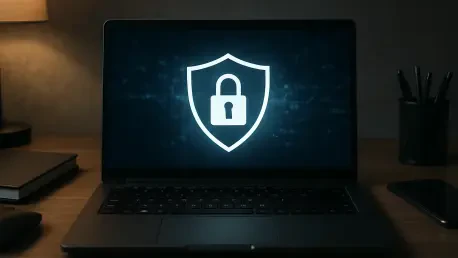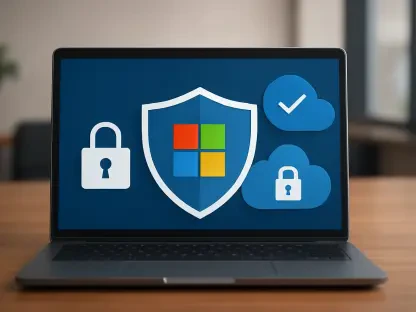In an era where cyber threats evolve at an unprecedented pace, driven by artificial intelligence and automation, businesses face a daunting challenge to protect data and systems beyond traditional network boundaries, especially as the rise of remote work and mobile devices has shattered the concept of a fixed perimeter. This leaves organizations vulnerable to sophisticated attacks that strike with machine speed. Amid this complex landscape, a Seattle-based cybersecurity leader, WatchGuard Technologies, has emerged with a bold strategy to transform how security is delivered. With a focus on unified solutions, the company is addressing modern challenges through rapid innovation and accessible, enterprise-grade tools. This commitment to staying ahead of threats positions WatchGuard as a pivotal player in reshaping the industry, offering practical defenses for a world where risks know no limits.
Pioneering a New Era of Security Solutions
Breaking Down Traditional Barriers
As cyber threats disregard conventional network boundaries, WatchGuard has taken a proactive stance by introducing solutions that prioritize protection for people, devices, and data regardless of location. The concept of Security Without Boundaries underpins this approach, reflecting the reality of today’s mobile and remote workforce. A notable advancement in this area is the launch of FireCloud Total Access, a hybrid SASE (Secure Access Service Edge) solution. Designed to scale from small businesses to large enterprises, it offers cloud-based protection and Zero Trust Network Access through a centralized platform. This ensures that security remains robust even in distributed environments, adapting seamlessly to the dynamic needs of modern organizations. By focusing on accessibility, WatchGuard enables companies with limited resources to implement enterprise-level defenses without the burden of complex setups, addressing a critical gap in the market.
The emphasis on mobility also extends to hardware innovations tailored for hybrid networks. WatchGuard’s Next-Gen Firebox Rackmounts stand out as high-performance firewalls engineered for distributed setups. These devices integrate zero trust access and multi-gig connectivity, ensuring that security measures keep pace with the demands of diverse infrastructures. Unlike traditional firewalls confined to static perimeters, these rackmounts are built to handle the fluidity of today’s digital ecosystems. This adaptability is a testament to the company’s understanding of evolving workplace trends, where employees access systems from varied locations and devices. Such advancements highlight a shift toward security that prioritizes flexibility, ensuring that protection is not a hindrance but an enabler of business continuity in an increasingly borderless digital world.
Embedding Trust at Every Layer
Another cornerstone of WatchGuard’s strategy is the integration of Zero Trust principles directly into its platform, redefining how security is approached in an age of eroded perimeters. The Zero Trust Built-In model focuses on continuous verification, ensuring that every user and device is authenticated and authorized at every step. This practical framework is evident in initiatives like the Global Zero Trust Roadshow, which targets managed service providers with actionable strategies for implementation. Spanning multiple cities worldwide, this program educates partners on embedding zero trust into their offerings, fostering a culture of relentless scrutiny that counters modern threats. Such efforts demonstrate a commitment to making advanced security accessible to diverse organizations.
Complementing this focus is the introduction of Endpoint Security Prime, a solution that sets a new standard in endpoint protection. By combining full Endpoint Detection and Response with Next-Generation Antivirus capabilities at a competitive price point, it empowers businesses to adopt zero trust readiness without financial strain. This offering addresses the growing need for comprehensive endpoint defenses as attack surfaces expand with remote work. The seamless integration of these features into a unified system reduces complexity for IT teams, allowing them to focus on strategic priorities rather than grappling with fragmented tools. WatchGuard’s approach here underscores a broader industry trend toward inherent security, where trust is never assumed but always verified through robust, user-friendly mechanisms.
Leveraging Technology for Real-World Impact
Harnessing AI for Faster Defenses
In response to the automation and speed of contemporary cyber threats, WatchGuard has embraced AI-Augmented Security to enhance its detection and response capabilities. Leveraging machine-speed intelligence, the company ensures that defenses operate at a pace comparable to AI-driven attacks, a critical factor in minimizing damage. This technology optimizes resource use by automating threat identification and mitigation, allowing organizations to stay ahead of adversaries who exploit automation for malicious purposes. The integration of AI into security protocols reflects a forward-thinking mindset, recognizing that human response times alone cannot match the velocity of modern risks. This innovation offers a lifeline to businesses overwhelmed by the volume and sophistication of attacks.
Beyond detection, AI plays a pivotal role in streamlining security operations for teams with limited bandwidth. By automating routine tasks and providing actionable insights, WatchGuard’s solutions enable IT staff to focus on high-priority issues rather than being bogged down by manual processes. This efficiency is particularly valuable for small to medium-sized enterprises and managed service providers, who often operate with constrained resources. The emphasis on AI-driven security also aligns with the broader industry shift toward proactive rather than reactive measures, ensuring that threats are neutralized before they escalate. Such advancements position WatchGuard as a leader in delivering cutting-edge tools that are both powerful and practical for real-world application.
Simplifying Security with a Unified Approach
A defining aspect of WatchGuard’s vision is the Unified Security Platform, which prioritizes deep integrations and simplicity in deployment and management. This strategy addresses the growing demand for streamlined ecosystems that reduce operational complexity, especially for organizations lacking extensive IT expertise. By consolidating security functions into a single, cohesive system, the platform minimizes the need for disparate tools that often create gaps in protection. This unified approach ensures that businesses can manage their defenses through a centralized interface, enhancing visibility and control over their security posture. The result is a solution that caters to diverse teams, making enterprise-grade security attainable without overwhelming complexity.
The focus on unification also benefits managed service providers, who require scalable and efficient systems to support multiple clients. WatchGuard’s platform simplifies the delivery of security services, enabling providers to offer robust protection without the overhead of managing fragmented solutions. This accessibility is a game-changer for smaller organizations that might otherwise struggle to afford or implement comprehensive defenses. By reducing the learning curve and operational burden, the company empowers users to prioritize strategic growth over technical challenges. Reflecting on these efforts, it’s clear that WatchGuard’s dedication to a unified framework tackles the pressing need for simplicity in an increasingly intricate threat landscape, setting a benchmark for the industry.
Reflecting on a Transformative Journey
Looking back, WatchGuard Technologies has carved a significant path in cybersecurity by rolling out a series of groundbreaking advancements over a condensed timeframe. The introduction of hybrid SASE solutions, next-generation firewalls, and comprehensive endpoint protection marked a strategic response to the dissolution of traditional network boundaries. Embedding zero trust principles and harnessing AI for rapid threat detection addressed the speed and complexity of modern attacks with precision. For organizations navigating this evolving landscape, the next step lies in adopting these integrated, adaptable solutions to fortify their defenses. Exploring partnerships with managed service providers educated through global initiatives can further enhance security readiness. As threats continue to morph, staying agile with platforms that prioritize simplicity and innovation will be crucial for sustained protection.









